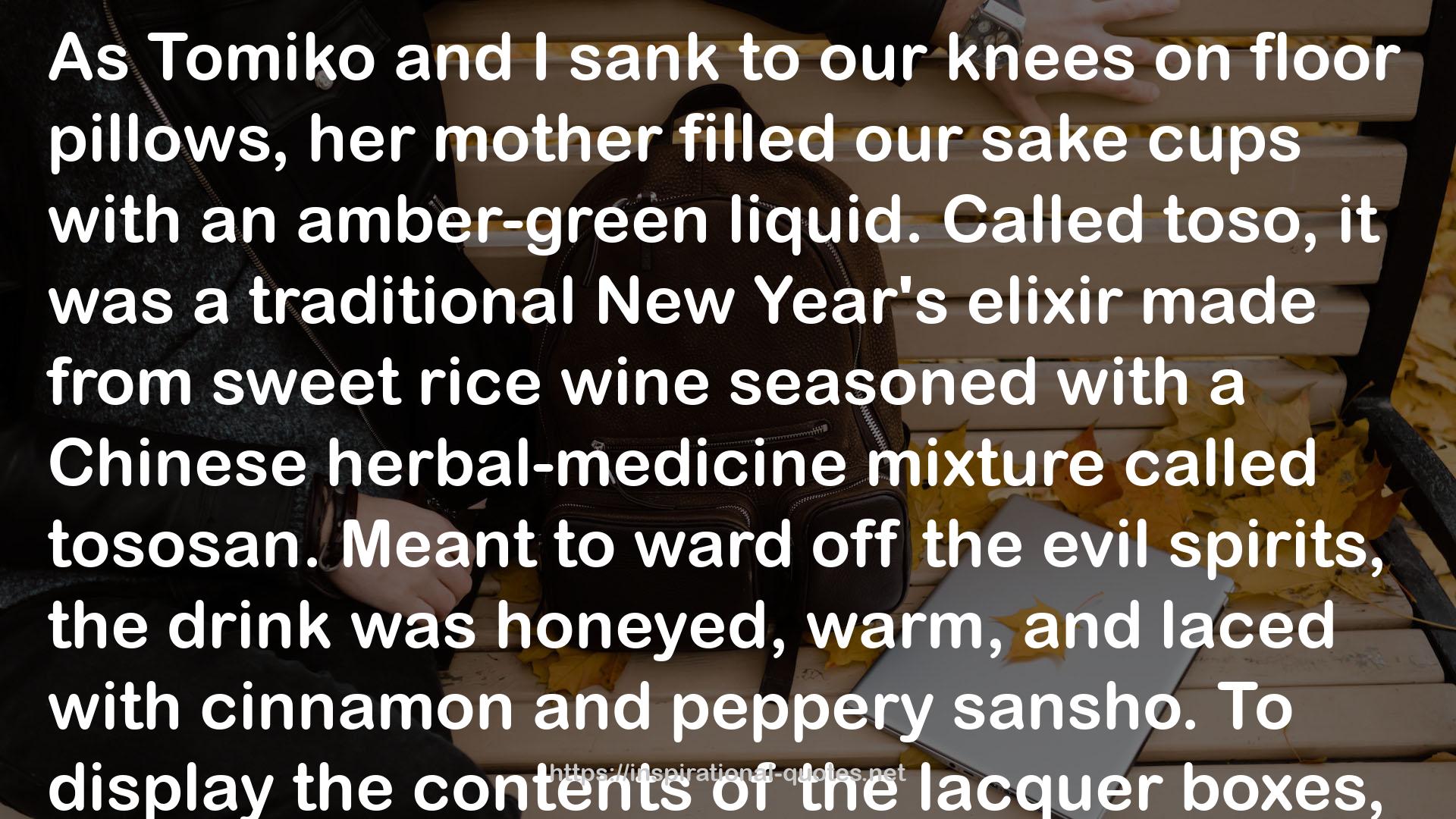" As Tomiko and I sank to our knees on floor pillows, her mother filled our sake cups with an amber-green liquid. Called toso, it was a traditional New Year's elixir made from sweet rice wine seasoned with a Chinese herbal-medicine mixture called tososan. Meant to ward off the evil spirits, the drink was honeyed, warm, and laced with cinnamon and peppery sansho.
To display the contents of the lacquer boxes, Tomiko's mother had arranged the various layers in the center of the table. The top layer always contains the traditional sweet dishes and hors d'oeuvres, while the second layer holds steamed, boiled, and vinegared offerings. The third box consists of foods that have been grilled or fried.
Since not everything fit into the lacquer boxes, Tomiko's mother had placed a long rectangular dish at everyone's place holding three different nibbles. The first one was a small bowl of herring eggs to represent fertility. Waxy yellow in color, they had a plastic pop and mild saline flavor. Next came a miniature stack of sugar- and soy-braised burdock root cut like penne pasta and tossed with a rich nutty cream made from pounded sesame seeds. Called tataki gobo (pounded burdock root), the dish is so named because the gobo (root) symbolizes the hope for a stable, deeply rooted life, while the homonym for tataki (pounded) also means "joy aplenty." The third item consisted of a tiny clump of intensely flavored soy-caramelized sardines that tasted like ocean candy. Called tazukuri, meaning "paddy-tilling," the sticky fish symbolized hopes for a good harvest, since in ancient times, farmers used chopped sardines along with ash for fertilizer. "
― , Untangling My Chopsticks: A Culinary Sojourn in Kyoto
Image for Quotes

tazukuri, meaning "paddy-tilling," the sticky fish symbolized hopes for a good harvest, since in ancient times, farmers used chopped sardines along with ash for fertilizer." style="width:100%;margin:20px 0;"/>
 tazukuri, meaning "paddy-tilling," the sticky fish symbolized hopes for a good harvest, since in ancient times, farmers used chopped sardines along with ash for fertilizer." style="width:100%;margin:20px 0;"/>
tazukuri, meaning "paddy-tilling," the sticky fish symbolized hopes for a good harvest, since in ancient times, farmers used chopped sardines along with ash for fertilizer." style="width:100%;margin:20px 0;"/>